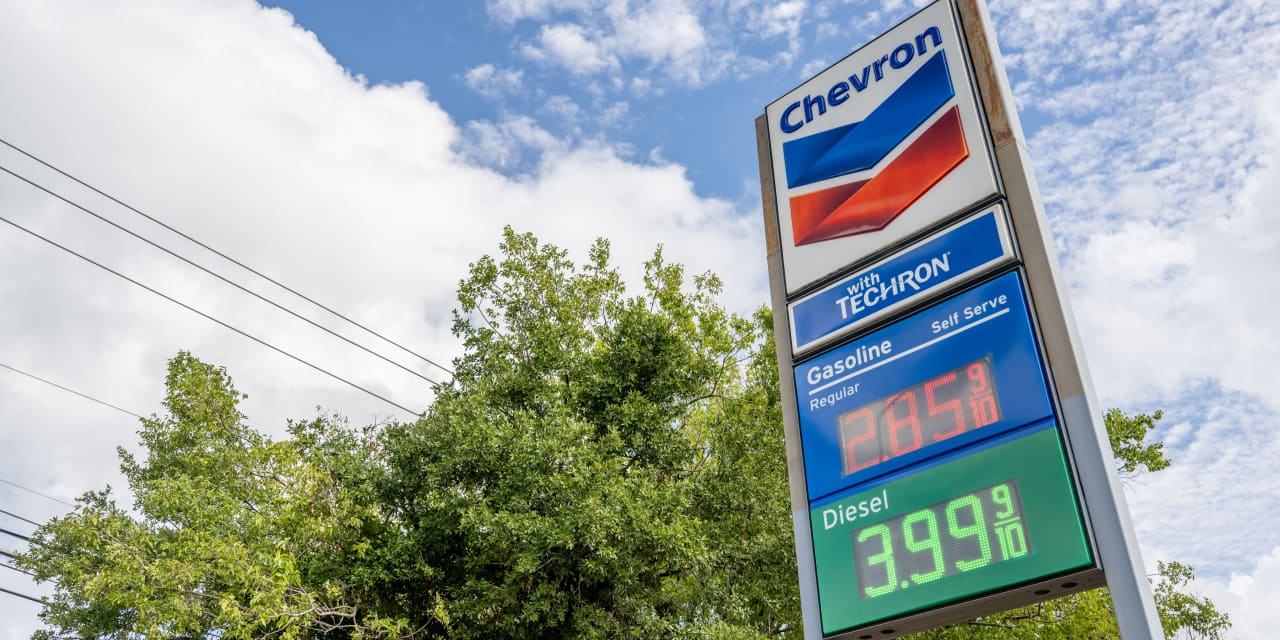Chevron stock is rated Buy by BMO Capital Markets.
Brandon Bell/Getty Images
If asked to choose between buying the world a Coke and Coke’s stock, it seems plenty of investors would shun the latter option.
Rising interest rates have been a headwind for equities in general, and high dividend-paying stocks in particular. Yet now might be the time to look into this unloved corner of the market,
BMO
Capital Markets says.
With yields on 10-year Treasuries hovering near 5%, and the Federal Reserve seemingly committed to a higher-for-longer strategy, interest rates have led many investors to buy virtually risk-free U.S. government debt—rather than assume greater risk for less relative return in the stock market. Equities might offer greater returns over the long-term, but it’s hard to buy into a pricey market, particularly when elevated interest rates now make future earnings less valuable.
The problem is even greater for high-dividend-paying stocks. Yield-hungry investors now have alternatives that simply weren’t available in the previous era of ultralow interest rates, such as bonds and high-yield savings accounts. In addition, sectors known for their high payouts have faced other challenges. Consumer staples stocks have been hit by worries about weight-loss drugs, for example, while energy stocks have struggled with largely rangebound oil prices this year.
The upshot is the Consumer Staples Select Sector SPDR (ticker: XLP), the Utilities Select Sector SDPR Fund (XLU), and
Health Care Select Sector SPDR Fund
(XLV) are deep in the red year to date, while the Energy Select Sector SDPR Fund (XLE) is up less than 1% since the start of the year. That compares to the
S&P 500’s
more than 8% jump.
However BMO’s Chief Investment Strategist Brian Belski argues that nearly “indiscriminate selling” of high dividend payers creates an entry point for investors. He offers three reasons that now could be an opportune time to scoop up some of these stocks.
For starters, history would suggest that their underperformance can’t last long. Over the past three decades, “there have been only two periods where high dividend yielding stocks have performed worse relative to the S&P 500 on a year-over-year basis: the tech bubble and the pandemic,” Belski writes. “According to our work, this type of abnormal underperformance has typically proved to be an inflection point historically.”
In fact, five other times when dividend payers’ relative underperformance was this dramatic over the past 30 years proved a good time to buy.
“These stocks tend to stage an impressive recovery following such levels,” Belski writes. Over the past three decades, they on average have outperformed the S&P 500 by more than 20% on an annualized basis from trough to peak in relative year-over-year total returns for periods lasting nearly a year. These stocks go on to maintain above-average outperformance for nearly two years following the peak as well.
Secondly, investors have “unfairly punished” high-yield stocks solely because they expect interest rates to be higher for longer, Belski says. While relative performance has tended to improve with falling interest rates, over the long term, rates haven’t been the biggest determinant for these dividend payers’ stocks. That lack of correlation between rates and their rise and fall means the current narrative likely won’t remain the determining factor for the group in the long run.
“In addition, it may be surprising to some that the strongest average outperformance of these stocks has occurred when the 10-year Treasury yield ranged between 4% and 6%, significantly higher than the average outperformance at lower yield levels,” he writes, again looking back some 30 years.
Finally, they just might be too cheap to ignore. While the S&P 500’s valuation has steadily risen this year, inflated by the increasingly high multiples fetched by big tech’s small winners’ circle, high yielding stocks’ forward price-to-earnings ratios are near a 20% discount to their historical averages, Belski notes.
The list of highest-yielding stocks that BMO also rates Outperform include
AbbVie
(ABBV),
American Tower
(AMT),
Bristol Myers Squibb
(BMY),
Chevron
(CVX),
Duke Energy
(DUK),
Gilead Sciences
(GILD),
Host Hotels & Resorts
(HST), Morgan Stanley (MS),
Pfizer
(PFE), Public Storage (PSX) and Ventas (VTR).
Write to Teresa Rivas at [email protected]
Read the full article here










